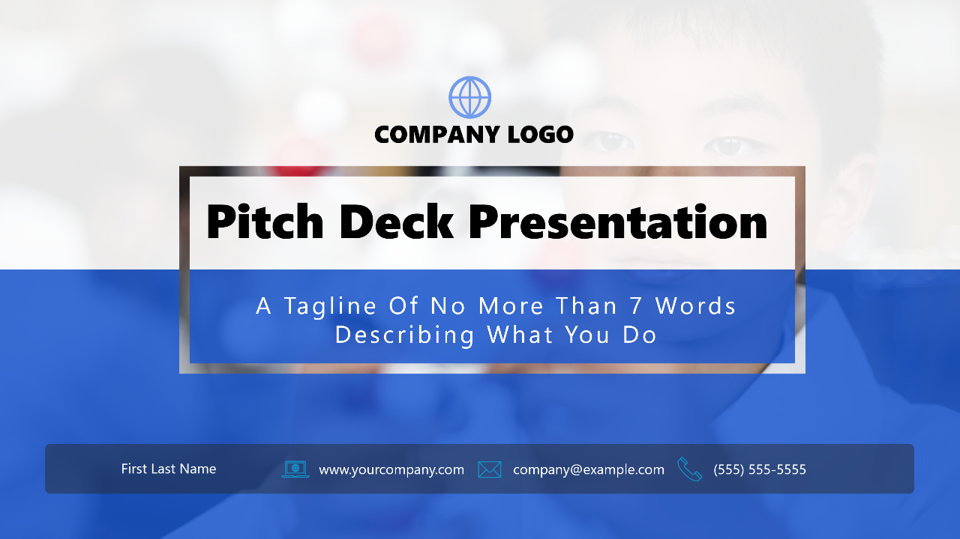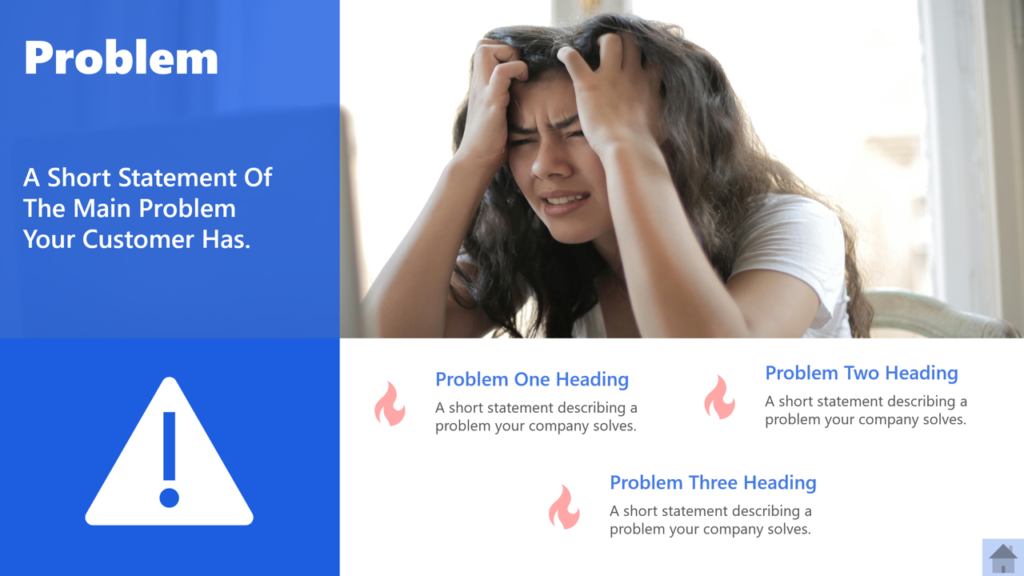Are you a founder getting to prepare to pitch to investors? If so in this article is for you we are going to talk about how you should start off your pitch presentation to entice investors. First I want to share with you a misconception about the purpose of a pitch presentation. I recently spoke with a tech startup owner who scheduled a free consultation with me for help with their pitch deck because they were getting ready to pitch their product to investors for millions of dollars. They did not know how to prepare for a pitch presentation and stated they did not know what a pitch deck was. They expressed they did not feel they needed a pitch deck but just a 3D model of showing how their product works. This approach is not correct. Meeting investors is not about just doing a demonstration of your product and talking about all its features and benefits. Nor if your business is a service it is not about talking about the services you offer. The expectation when we take this approach is the investor is going to be so amazed and impressed by all the features and unique aspects of our product or service and hand you a check. This expectation is unrealistic.
The reality is during your meeting you will be expected to provide an overview of your company not just a demonstration of how your product works but you will be expected to speak on your company’s competition, traction, go to market strategy, milestones, business model, among other aspects. You will also be expected to have a pitch deck which is a series of slides often created in PowerPoint or similar program which acts as a visual aid to your oral presentation.
It is important to remember a pitch deck is not designed to raise money. Your goal is to intrigue and interest investors with just enough juicy information about your company that they will want to know more. You are not going to be handed a check the same day you do your pitch. It is only after this initial presentation when they will want to go on a deeper dive about your company. Since the purpose is to intrigue and interest investors that means our pitch needs to be persuasive rather than an informational speech describing our product/services. The whole purpose of your pitch deck is to get the “second date”-that is, a follow-up meeting where your business will be discussed in greater detail. Similar to how you don’t overwhelm someone on a first date by sharing your entire life story, it’s equally important not to provide an exhaustive account of your business when introducing it to investors.
When Starting Your Pitch Deck
As you are speaking you are taking your listener on a journey about your company. Think about it like telling a story where there is a beginning, middle, and end.

In the beginning you are introducing yourself and your company by just saying your name, name of your company, and company tagline. Give a short description approximately 5-7 words about your company and the services/ products you provide which would be your unique value proposition. This part of your presentation should be 30 seconds or less. You are setting the scene.

Sample Slide from PowerPoint Template
Then next speak about challenges faced. Someone is not going to be as receptive to your idea if they do not first understand the purpose of your idea. So, a great way to start your pitch is by describing the problem your product or service solves. A very effective way of getting your audience to resonate with and feel the pain this problem is causing your customers is through the use of storytelling. You may do this by telling the story of how you or someone else experienced this problem.

Sample Slide from PowerPoint Template
Starting Your Pitch with Storytelling
I am going show an example of this it is a clip from a show called Shark Tank where startups pitch to sharks for funds in return for equity in their company. The company in the clip is called Everlywell. They help people get clear results to various kinds of medical tests. Notice how the owner of a company called Everlywell introduces her company to the sharks with a short description of her company and then immediately starts to tell a story to introduce the problem her product solves. You will see how she makes the transition from the story to stating the solution and doing a demonstration of her product.
Why Speak About the Problem First
By structuring your presentation with a story that introduces the problem your product or service solves, you create a persuasive framework. When people grasp the pain associated with the problem and buy into its importance, they become more receptive to hearing about a potential solution. To illustrate this concept, imagine visiting a doctor who abruptly suggests that you need heart surgery without explaining why or indicating any prior heart issues. In such a situation, you are unlikely to immediately agree with the doctor. You might question their expertise and seek a second opinion. Your initial reaction would likely be, “Why do I need heart surgery, and what health problem would it solve?”
However, if the doctor begins by stating the problem instead of the solution, such as identifying a potentially life-threatening issue with one of your heart arteries, your interest increases. Now, you eagerly want to learn about the solution and even beg the doctor to share it. Since you have a clear understanding of the problem, you become much more receptive to the solution. Initially, you rejected the idea of surgery, but now that you comprehend the problem, you are eager to undergo the procedure.
Similarly, when presenting your product or service to investors, it is essential for them to first understand the problem you are addressing. Once they grasp the nature of the problem, they become more open to considering your solution. Gaining their comprehension and recognition of the problem is a crucial step in garnering their interest and support.
What If My Product/Service Does Not Directly Solve a Problem
When presenting a product or service that doesn’t directly solve a problem, it may seem challenging to determine how to start your presentation. In such cases, there might be a temptation to immediately delve into discussing the wonderful benefits and features of your offering. However, it’s crucial to resist this temptation. Investors still need to understand why they should care about what you’re offering, even if it doesn’t directly address a problem.
Let’s consider for example a fictious startup that wants to establish a new type of amusement park featuring an innovative thrill ride. Building an amusement park doesn’t necessarily solve a problem—it’s primarily about entertainment. In this scenario, they can focus on how their amusement park capitalizes on a specific market trend where people are actively seeking more thrilling rides. They can describe how individuals are increasingly desiring more exciting experiences and how existing amusement parks tend to offer similar types of rides. By highlighting this need first, before delving into the details of their park idea, they establish the necessity for their park’s existence.
In conclusion, it remains important to initially describe the need for your product or service, even if it doesn’t directly solve a problem. The most effective approach is to outline the problem your product or service addresses before providing specific details about what it entails. This approach allows you to establish the need and generate investor interest and concern. By doing so, you deliver a persuasive presentation rather than a purely informational one, increasing your chances of success in fundraising endeavors.

